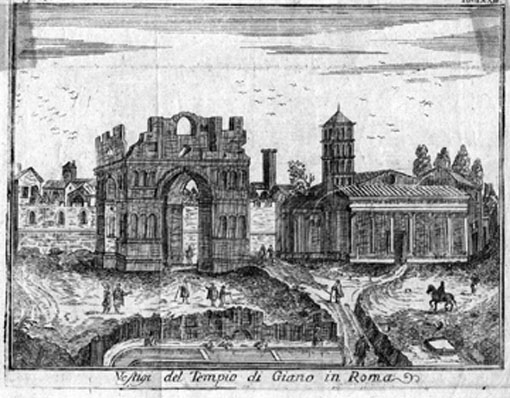
Katherine Rinne, "The landscape of laundry in late cinquecento Rome", in Studies in the Decorative Arts 9:1 (2001-2002), 34-60.
This article investigates the role that public policy and papal patronage played in the development of public laundry facilities in late cinquecento Rome. In Rome, as elsewhere, the control and distribution of water supplies was crucial to the smooth functioning of the city. The official choice of locations for public laundry activities, the physical character of the sites within the topography of the city as a whole, and the policies developed by communities and governments to oversee those sites and activities communicate much about the status of women who worked at these tasks and about the official attitudes toward the use of public streets and piazzas for domestic tasks. The siting, physical configuration, and administration of these facilities had a serious impact on the lives of the people who used them--housewives and their daughters as well as professional laundresses, some of whom were former prostitutes. Laundry activities were strigtly regulated by both papal and communal policy, and women were harshly punished for operating outsite the established physical and social parameters.
This article examines three new public laundry sites that opened during a twenty-five year period in Rome. These are the Fonte di San Giorgio, which was opened by Pope Pius IV in 1563. It was supplied with water from a natural spring located in the Velabro district near the church of S. Giorgio in Velabro and the Janus Quadrifrons. The other two laundries were supplied with aqueduct water. The second laundry was sponsored by the Comune (civil government of Rome) and supplied with water from the newly restored Acqua Vergine. It was designed by Giacomo della Porta in 1581 and was located just to the west of the piazza del Popolo. The third, the Lavatoio Felice was designed by Domenico Fontana and completed in 1588. It was sponsored by Pope Sixtus V and was located at the top of the Quirinal hill at the terminus of the new Acqua Felice.
This article illucidates the strong physical relationships between water and topography. Water distribution is demonstrated to be closely allied with political, cultural and social agendas, and hence provides an example of how an understanding of water infrastructure becomes a valuable tool for urban analysis. An examination of water infrastructure can illuminate larger questions about the daily life of women, the construction of an urban image, the politics of social control, and the dynamics of urban development.

"Vestigie del Tempio di Giano in Roma" by Marcus Sadeler (1606). This engraving, which is a copy of a 1575 print by Etienne Du Perac, shows the "Lavatoio di San Giorgio" of 1563, located just to the south of the Janus Quadrifrons(left) and the church of S. Giorgio in Velabro (right). The laundry basin was located below ground level in an excavated area at the site of a natural spring located near the Tiber River.
Aquae Urbis Romae: the Waters of the City of Rome
Copyright, Katherine W. Rinne, 2002